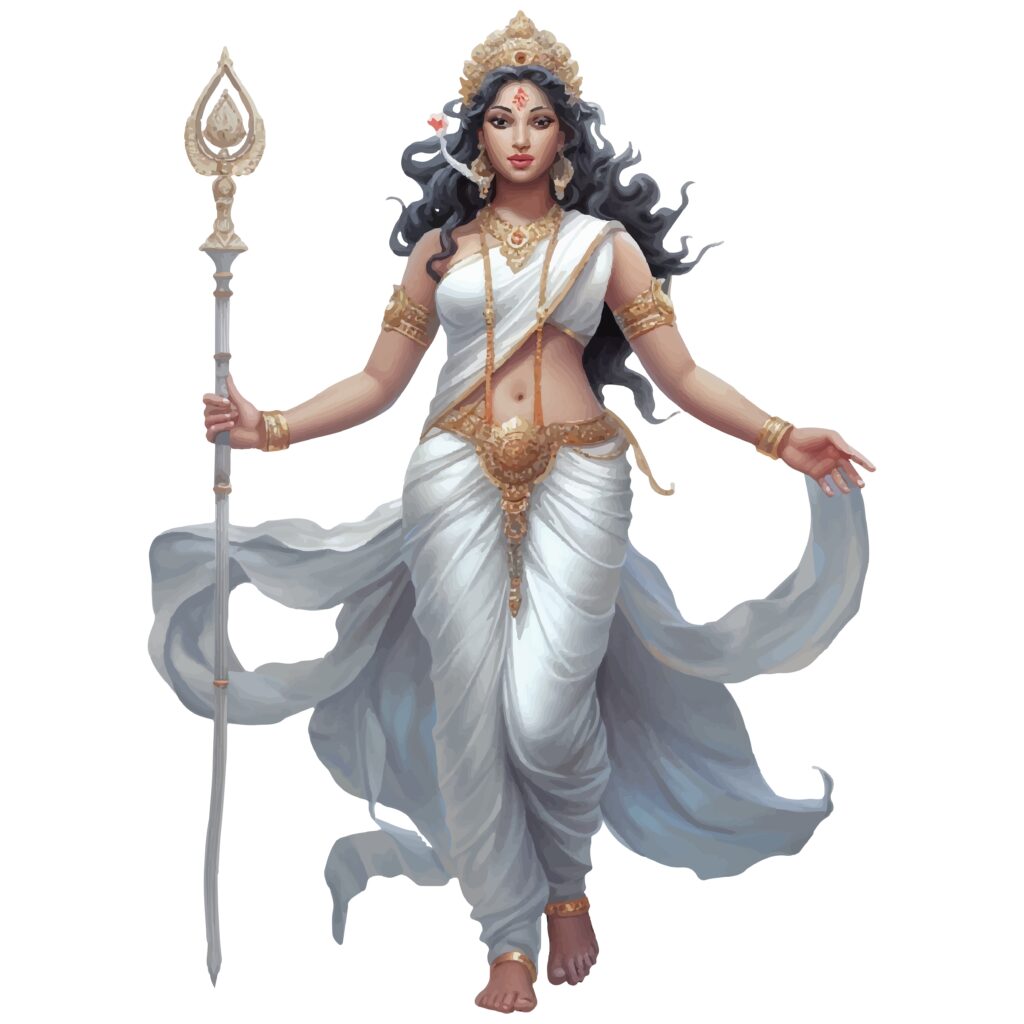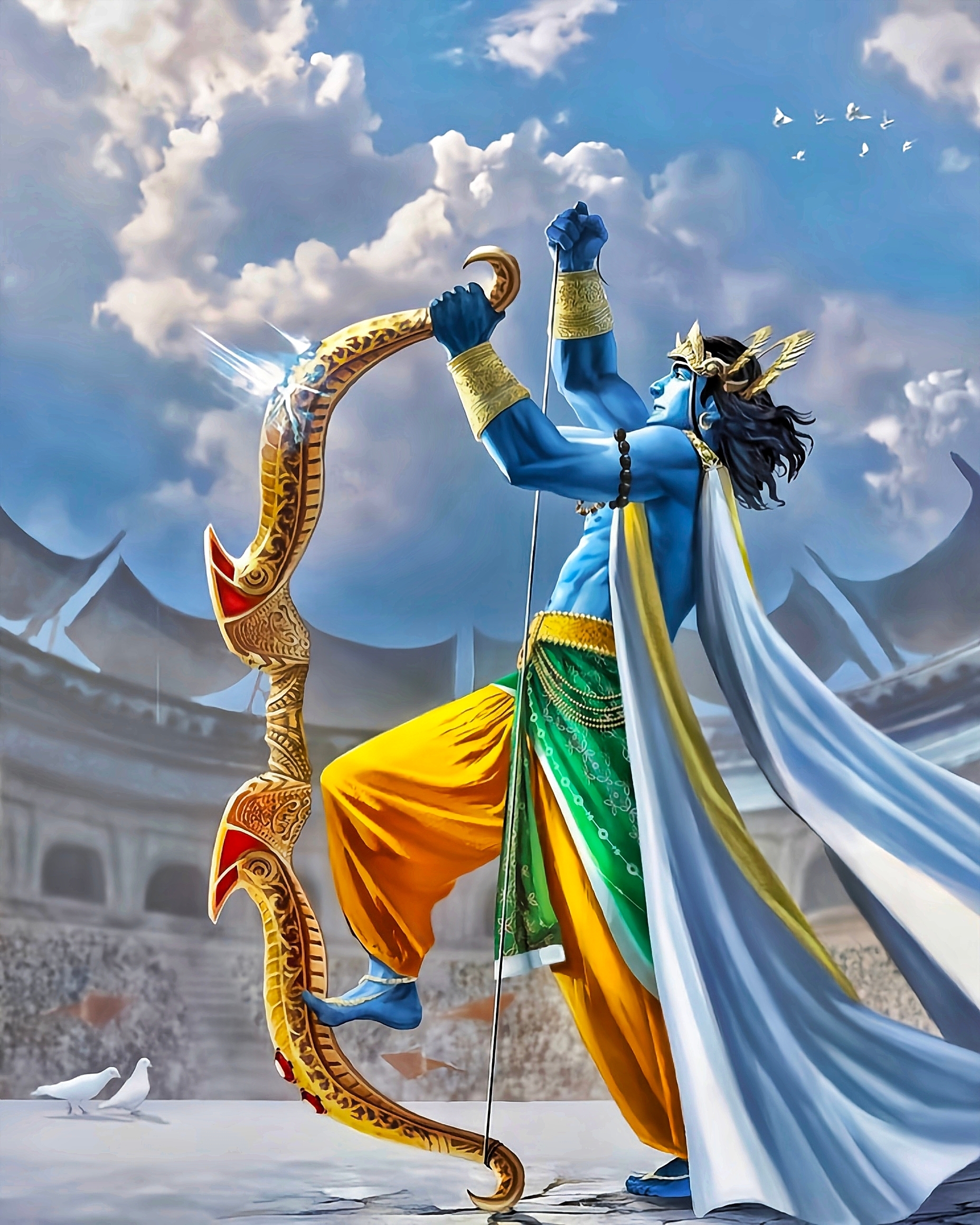Krishna is a pivotal character in the Hindu epic, Mahabharata. He is revered as an incarnation of Lord Vishnu, one of the Hindu trinity, and is seen as a protector, guide, philosopher, and friend. Krishna’s role in Mahabharata has been of great significance and his teachings and philosophy, primarily found in the Bhagavad-Gita, have been regarded as spiritual enlightenment not only in Indian culture but also worldwide.
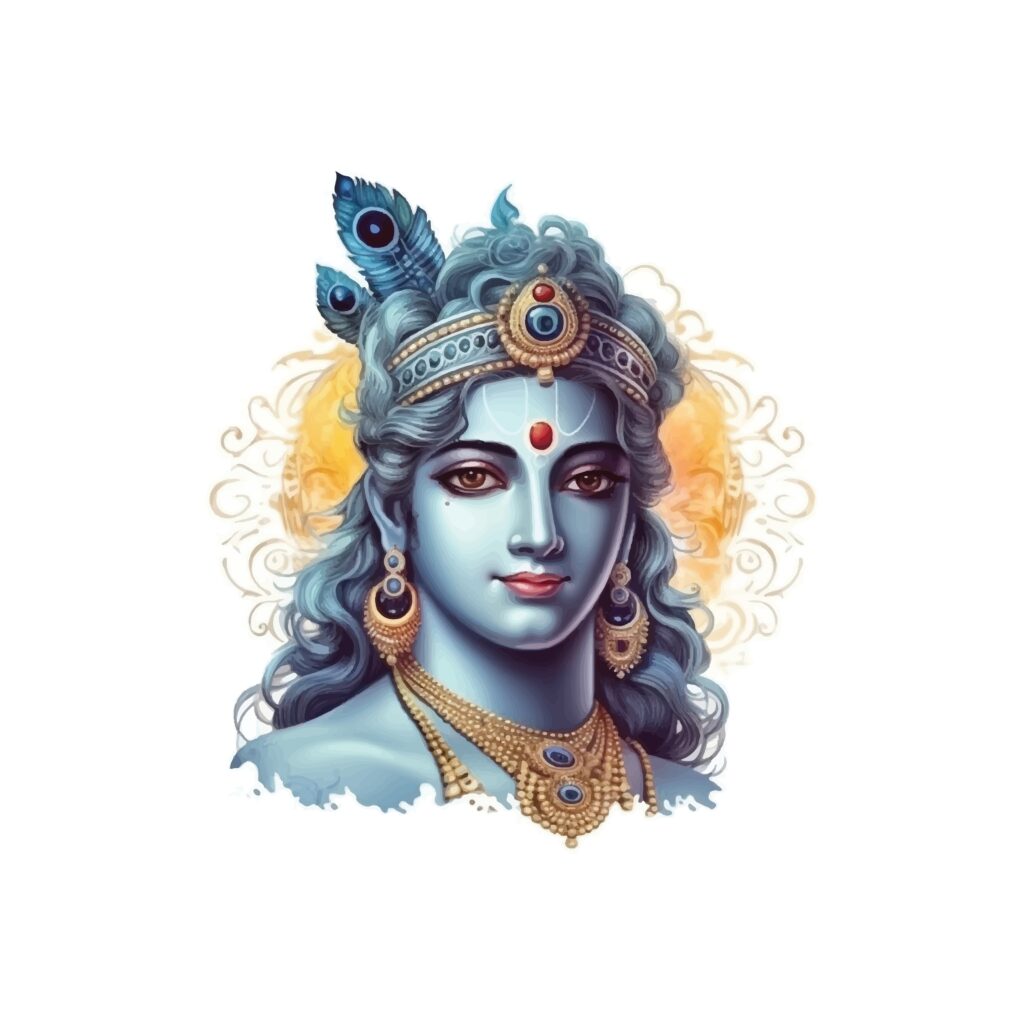
Character Portrayal:
In Mahabharata, Krishna is depicted as a charismatic and powerful individual who commands the flow of the story. He has a magnetic personality, full of charm and wisdom. While Krishna was the king of Dwarka, he played varied roles during different stages of the epic – a negotiator, a charioteer, a guide, and an adviser to Arjuna, one of the Pandava brothers.
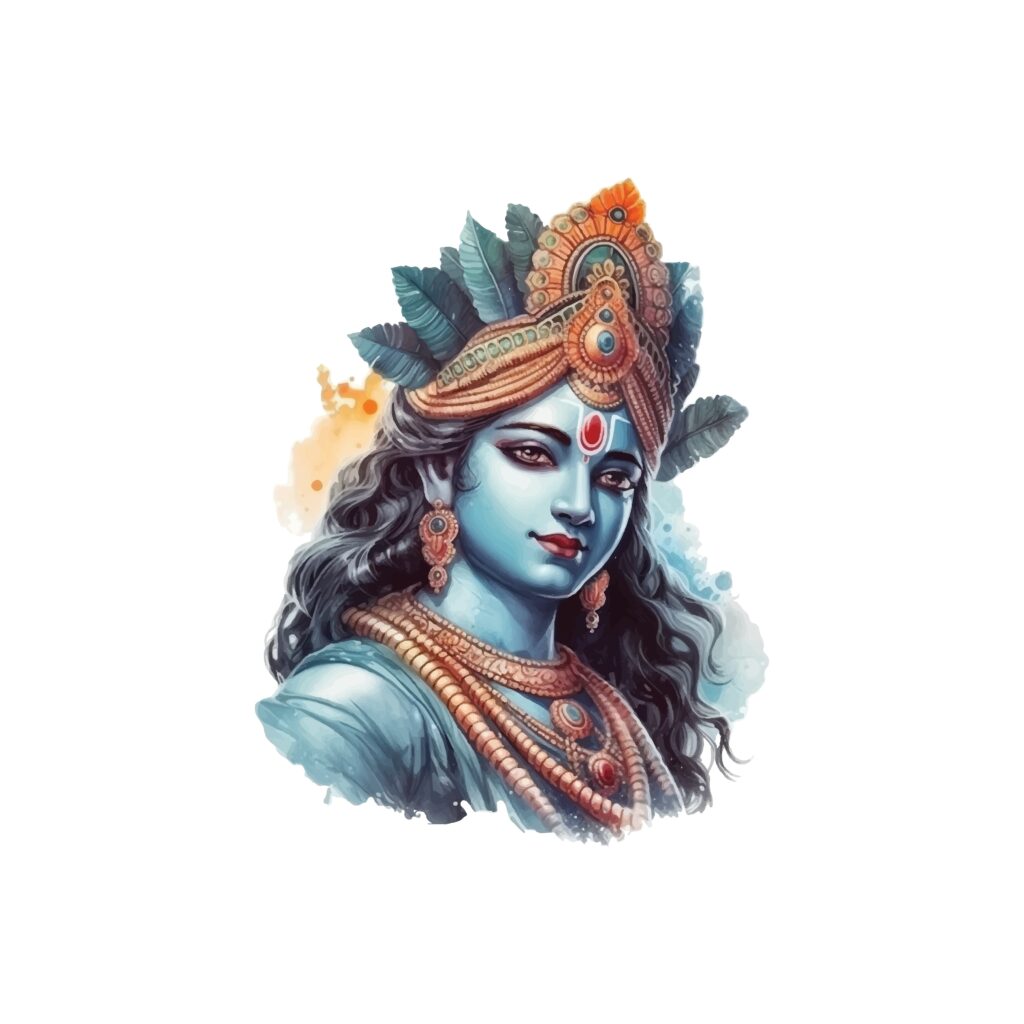
Role in Mahabharata:
His role becomes more pronounced at the time of the Kurukshetra war between the Kauravas and the Pandavas. Krishna doesn’t actively participate in the war and takes the role of a charioteer for Arjuna. However, his strategic suggestions largely contribute to the Pandavas’ victory over the Kauravas.
The Bhagavad Gita:
One of the quintessential moments in the Mahabharata is the recitation of the Bhagavad Gita by Krishna on the battlefield of Kurukshetra. When Arjuna is reluctant to fight against his own family, fearing sin and destruction, Krishna enlightens him with philosophies related to duty, righteousness, and the immortal nature of the soul. This 700-verse Hindu scripture is a conversation between Prince Arjuna and Krishna, regarded as the godly form of philosophical and ethical discourses.
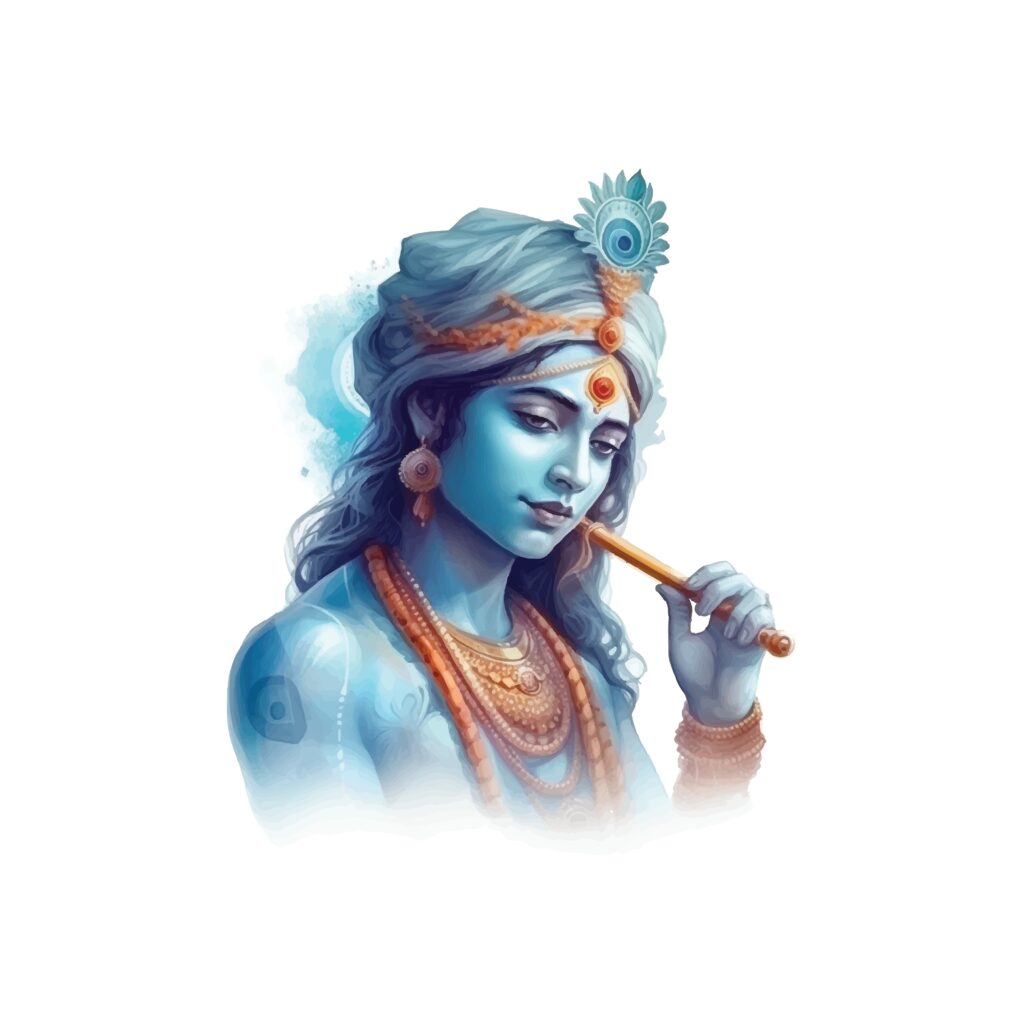
Diplomacy and Strategy:
As a peace negotiator, Krishna attempted to prevent the catastrophic war by mediating a peace treaty between the Pandavas and the Kauravas. However, the Kaurava prince Duryodhana’s refusal led to the inevitable and violent war. It was also Krishna’s strategy that led to the killing of many invincible Kaurava warriors, making him a critical character in deciding the course of the war.
In the world of Mahabharata, Krishna stands as a potent symbol of righteousness. His character portrays various aspects and dimensions – him being a god and at the same time acting as a charioteer, a messenger, and a guide. Hence, Krishna’s role and teachings in the Mahabharata have had a lasting impact, making his character one of the most revered and influential ones in Hindu mythology.
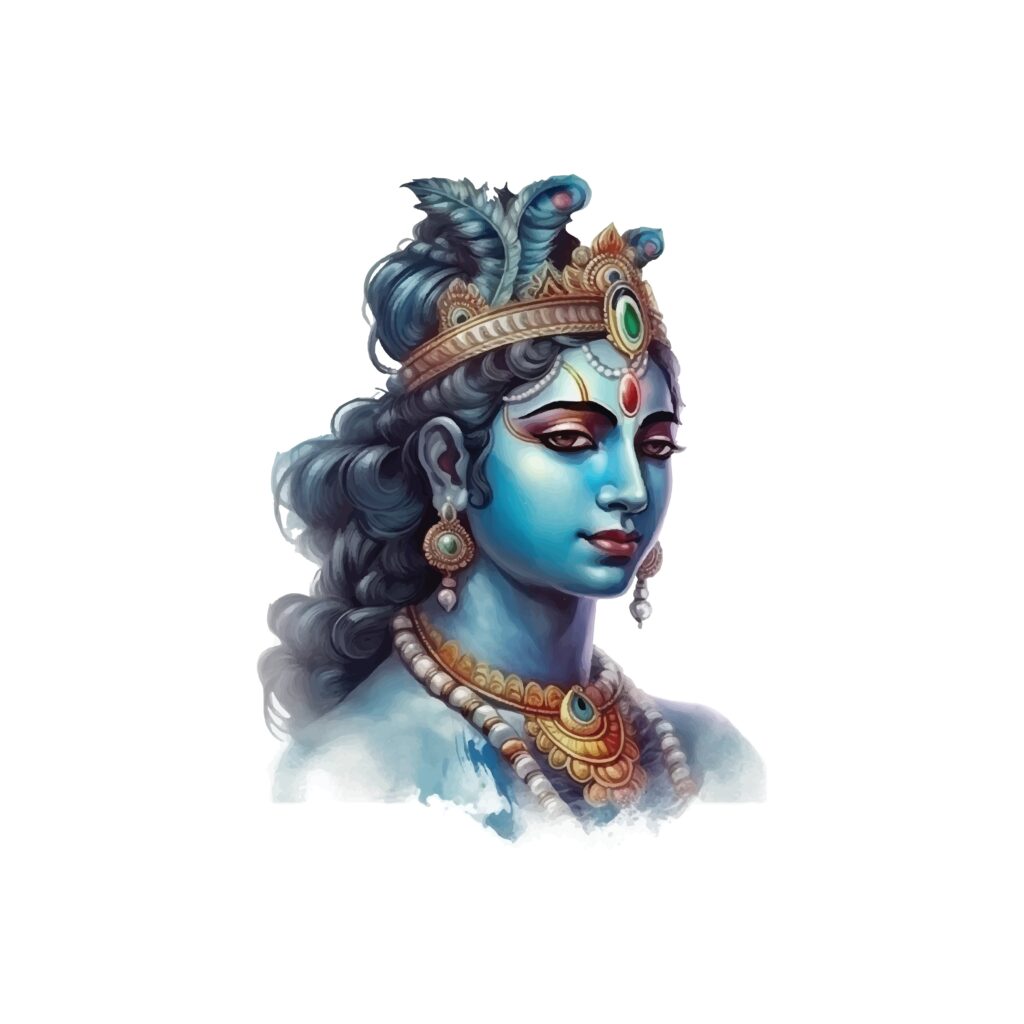
Krishna’ Looks
Krishna in Mahabharata is one of the most significant and revered characters. He is traditionally seen as the eighth avatar of Lord Vishnu and is massively respected and worshipped by millions across the world for his wisdom, divinity, and his crucial role in Mahabharata, one of the two major Sanskrit epics of ancient India.
In terms of physical looks, Krishna is depicted as having a dark complexion, often described as ‘neelamani’, having the color of the blue sapphire or sometimes even ink-black. The reason behind his blue shade is often symbolically implied to his infinite nature, just as the vast blue sky and the deep blue ocean.
His eyes, described as ‘lotus eyes,’ are elongated at the corners, giving equal parts a compassionate and enigmatic gaze that radiates an immense sense of wisdom and divinity. He is pictured as having a slender and toned physique, often depicted in artworks and scriptures in dynamic postures, embodying agility and grace.
He is always portrayed displaying ‘mudras’ (symbolic hand gestures) significant to his messages and teachings. His hair is typically depicted as black and curly, flowing down to his shoulders and sometimes adorned with a peacock’s feather, signifying his connection with nature and the divine.
Krishna is often portrayed wearing a yellow piece of cloth known as ‘pitambara’ draped gracefully around his waist and legs. He wears a long string of pearls across his chest, amplifying his royal stature. He is also depicted wearing a crown sometimes, symbolising his divine status. Though he’s barefoot most of the time, his feet are shown having distinct divine marks such as lotus, flag, thunderbolt, and barley signifying his divinity.
The most significant accessory associated with Krishna is the ‘bansuri’ or the flute. The music emanating from his flute was said to enchant all beings around him, reflecting his allure and enchanting persona.
The physical appearance of Krishna in Mahabharata is a blend of charm and charisma, embodying divinity and human essence with grace and elegance.
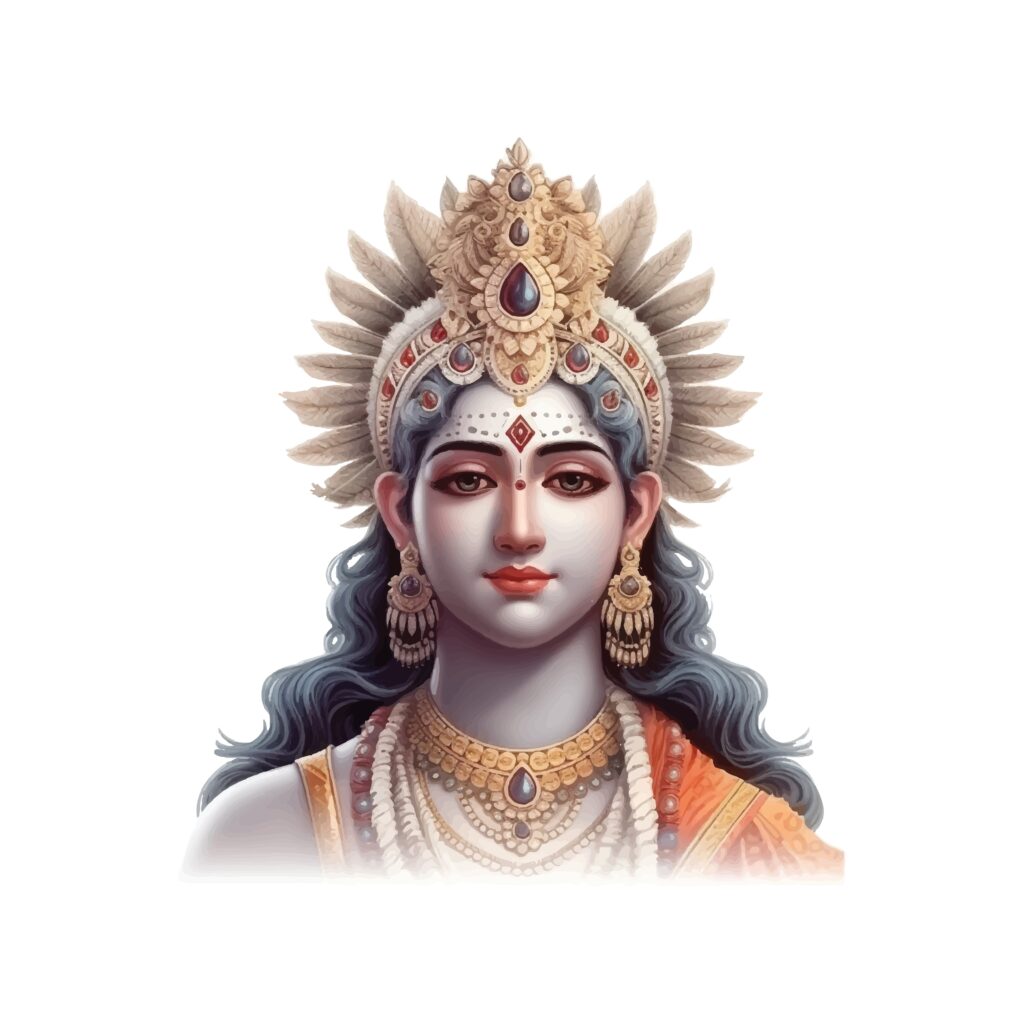
Krishna’s Flute
Krishna in Mahabharata is fascinatingly associated with music, primarily through his flute, which is as much a symbol of his divine charm as it is of his enchanting persona. His flute is not a mere musical instrument, but a metaphorical extension of Krishna himself. Often, he is depicted with a flute in his hands, symbolizing divine music that fills the universe and hearts of his devotees.
According to the mythologies, Krishna’s flute music would enchant every life form around. His divine melody was compelling; the cows would stop ruminating, rivers would slow down their pace, and people would forget their routines entirely, lost in the mesmerizing tunes. It encapsulates Krishan’s leelas, underlining his divine play in the universe and his power to control the nature around him.
Krishna’s music symbolizes divine love and spirituality. The devotion towards Krishna is often symbolized by being attracted or drawn to his flute music. The profound allegory here is that when one’s mind is fully absorbed in Krishna (the divine), they attain a state of transcendence, losing awareness of material concerns, much like how everything stopped to listen to Krishna’s enchanting music.
The flute and the music it produces hold a deep philosophical meaning. Krishna’s divine flute invites the melody of love into one’s life. It symbolizes the call of the divine for human souls to abandon worldly attachments. Krishna’s celestial tune is the spiritual rhythm of existence itself. Krishna’s flute, therefore, is also symbolic of a spiritual call to all beings, a call to experience the divine love and bliss.
Krishna’s flute music draws upon themes of love, longing, and surrender, symbolizing a soul’s yearning for union with the divine. It also includes lessons of surrender to divine control, faith, and the concept of ‘Nishkaam Karma’, which is doing one’s duty without any desire for its fruits.
Through the Mahabharata and other Hindu scriptures, Krishna and his magical flute music serve as profound metaphors, offering insights into spirituality, love, and devotion, touching millions of hearts across Asia and the world.
Krishna’s Romance
Lord Krishna’s romance, often worshipped and depicted through the beautiful tales of his interaction with his beloved Radha, is one of the most celebrated aspects of Hindu mythology. His love story has been an inspiration for artists, painters and poets alike, and symbolizes divine love and longing.
Krishna’s romantic life not only included his childhood sweetheart Radha but also the 16,108 gopis (cowherd girls) who were deeply infatuated with Krishna at Vrindavan. However, it was Radha who held the supreme place in his heart and was considered his consort.
The romance between Lord Krishna and Radha is a classic tale of love, often described as the highest form of devotion. According to legend, Radha was the most devoted follower of Krishna. She loved him with all her heart, and Krishna reciprocated her feelings. They spent their childhood together in the village of Vrindavan. Their meetings were secret and usually took place in the forest. Their love is expressed beautifully in the popular “Raas-Leela” dance where Krishna multiplies himself to dance with each Gopi.
Although romantically involved, Krishna and Radha were never married. As the story goes, Krishna left Vrindavan and Radha to fulfill his responsibilities in Mathura. Despite the separation, their love for each other never diminished and Radha continued to live with the memories of Krishna.
The love of Radha and Krishna is often interpreted as the quest of human soul for the divine. Radha’s yearning for union with Krishna is symbolic of the human quest for spiritual enlightenment and the eternal love of God.
While many find the tales of Lord Krishna’s romance enthralling and interesting, for devotees, these stories are a means to understand philosophical truths. The love story of Krishna and Radha is deemed as a timeless legend that transcends the boundaries of earthly relationships and treads into the domain of spiritual experience.
In the Bhakti tradition, Lord Krishna’s romance is celebrated as the epitome of divine love, and his playful interactions with Radha and the gopis serve as metaphors for the relationship between God and his devotees. In essence, the stories of Krishna’s romance emphasize the importance of love and devotion in one’s spiritual journey.
Krishna’s Leelas
Lord Krishna is one of the most prominent Hindu deities, worshipped as the eighth incarnation of the God Vishnu. Amongst Krishna’s fascinating life stories that manifest his divine power, love, mischief and wisdom, there are many “leelas” or cosmic plays. Here are a few:
- Putana Moksham: After Krishna was born, Kansa, a cruel king and Krishna’s uncle, was determined to kill him. He sent a demoness named Putana to poison Krishna. However, when Putana put Krishna to her poisoned breast, it was she who perished instead. This leela signifies that Krishna redeems and absolves everyone, irrespective of their deeds.
- Damodara Leela: This is a well-known leela of Lord Krishna as a child. His foster mother Yashoda once became upset with Krishna for eating soil. To punish him, she tried to tie him with a rope to a grinding mortar. But the rope always fell short by two fingers, despite repeated attempts. After Yashoda exhausted herself, Krishna, moved by her dedication, allowed himself to be bound. This leela symbolizes the cosmic notion that one can attain God or supreme bliss only through pure love and dedication.
- Govardhan Leela: In Krishna’s village, the people of Vrindavan used to worship Indra, the King of Heaven and the God of rains. But, Krishna persuaded them to worship Govardhan Hill instead. Filled with rage, Indra showered torrential rain onto Vrindavan. Krishna then lifted the Govardhan Hill with his tiny finger, providing shelter to all the lives in Vrindavan underneath it. This leela illustrates that God will always protect his devotees.
- Raas Leela: One of the most well-known of Krishna’s leelas is the divine dance performed with Radha and other gopis (milkmaids) on a beautiful moonlit night at the banks of river Yamuna. Through this leela, Krishna demonstrated the concept of ‘Akhanda Brahmavada,’ where each gopi felt as if Krishna was dancing with her alone. This divine pastime is seen as a symbol of the soul’s yearning for a union with God.
- Kaliya Mardan Leela: Once, Krishna jumped into the poisonous water of the Yamuna River, which was the home to the serpent king, Kaliya. Krishna danced on the hoods of the multi-headed serpent, finally taming him. Krishna then spared Kaliya’s life and asked him to leave the river and troubled no one. This leela signifies the triumph of good over evil.
These are just five of Krishna’s many leelas, each one carrying deep philosophical meanings and teachings. These leelas are still used to teach lessons of love, devotion, surrender, and righteousness.
Vastra Haran
One significant event told in Hindu mythology is the incident where the gopis (cowherd girls), companions of Lord Krishna, had their dresses stolen by him. This incident is appropriately known as “Vastra Haran” and is well-documented in Srimad Bhagavatam.
During Krishna’s childhood and early youth he lived in the village of Vrindavan, where he often engaged in playful activities with the gopis, who held great affection for him.
The story goes that on a beautiful, moonlit night, while Krishna was playing his enchanting flute, the gopis, drawn by the divine music, left their homes and went to the Yamuna River to meet him. There, to the rhythm of the flute, they started to sing and dance with Krishna.
At one point, they decided to swim in the river to refresh themselves. They left their garments on the riverbank and went into the water. Seizing this opportunity, Krishna quietly left the dance and took all their clothing, climbing up a nearby tree.
When the gopis finished their bath, they realized that their clothes were missing. They saw Krishna on top of the tree, wearing a mischievous smile, and their clothes hanging from the branches. He told them if they wanted to get their clothes back, they had to come out of the water as they were, one by one, with their hands above their heads. Initially, the gopis felt greatly embarrassed. But Krishna assured them that he was not trying to humiliate them.
The profound spiritual interpretation of this story is that one has to surrender to the divine completely to be free of material attachments (symbolized by the clothes) and attain spiritual liberation. Krishna, by taking their dresses, was teaching the gopis about the spirit of surrender to God.
Finally, seeing the sincerity and faith of the gopis, Krishna returned their clothes. Through this playful act, Lord Krishna taught the gopis to surrender completely, letting go of their modesty and pride, to reach the highest state of devotion and spiritual enlightenment.
Krishna and Draupati
The story of Lord Krishna saving Draupati with a saree is one of the most memorable and significant incidents from the Indian epic Mahabharata. This incident presents the protective nature of Lord Krishna and his omnipresence in our life.
In the Mahabharata, Draupadi was the wife of the five Pandava brothers. She was a woman of great virtue, beauty, and intelligence. The incident of Draupadi’s disrobing takes place during a phase called the ‘Dyut Sabha’, which was a royal court where a game of dice was taking place.
In this game of dice, Yudhishthira, the oldest of the Pandava brothers, staked everything he had, including himself, his brothers and even his wife, Draupadi, driven by the deceit and treachery of his cousins, the Kauravas, and their wicked uncle, Shakuni. When Yudhishthira lost Draupadi to the Kauravas, Dushasana, one of the Kaurava brothers, dragged her by the hair to the court and attempted to disrobe her to humiliate her.
Draupadi prayed fervently to Lord Krishna, whom she considered her true friend and protector. It’s said, when Dushasana started disrobing Draupadi, she prayed to Lord Krishna and He started lengthening her saree to an infinite length, thus shielding her modesty. Despite Dushasana continuing his efforts, he found that the garment covering Draupadi was unending.
Draupadi’s infinite garment symbolizes divine grace and protection. Lord Krishna, by providing the unending cloth, demonstrated that when surrender is pure and unconditional, divine help is always at hand to protect honor and righteousness.
The episode of “Krishna saving Draupadi with a saree” is considered a miracle and is celebrated as a testament to the celestial and protective nature of Lord Krishna. This story is an example of the timeless moral lesson by Lord Krishna that dharma, or righteousness, and devotion towards God will always be rewarded with divine protection.
